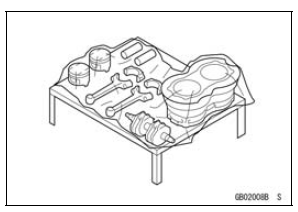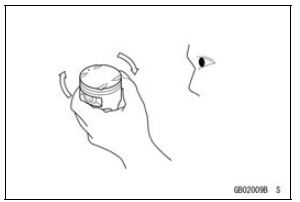

After all the parts including subassembly parts have been cleaned, store the parts in a clean area. Put a clean cloth or plastic sheet over the parts to protect from any foreign materials that may collect before re-assembly.

Inspection
Reuse of worn or damaged parts may lead to serious accident.
Visually inspect removed parts for corrosion, discoloration, or other damage. Refer to the appropriate sections of this manual for service limits on individual parts. Replace the parts if any damage has been found or if the part is beyond its service limit.

 Cleaning Vehicle before Disassembly
Cleaning Vehicle before Disassembly Replacement Parts
Replacement PartsTire Tread Wear Inspection
As the tire tread wears down, the tire becomes more susceptible
to puncture and failure. An accepted estimate is
that 90% of all tire failures occur during the last 10% of tread
life (90% worn). So it is false economy and unsafe to use
the tires until they are bald.
Measure the tread depth a ...
ESD (Electronic Steering Damper) ECU Removal (ZX1000JD/KD)
NOTICE
Never drop the ECU especially on a hard surface.
Such a shock to the ECU can damage it.
Lift up the front portion of the fuel tank, and hold it with a
suitable bar or block (see Fuel Tank Removal in the Fuel
System (DFI) chapter).
NOTE
When removing the ESD ECU only, there ...
Related Parts Locations
KIBS Control
1. ABS performance equivalent to the current model (enhanced braking
stability)
By monitoring front caliper hydraulic pressure, KIBS regulates pressure
increases reducing the tendency
of the rear to lift. Before the ABS system fully reacts, KIBS system prevents
the pressure ...